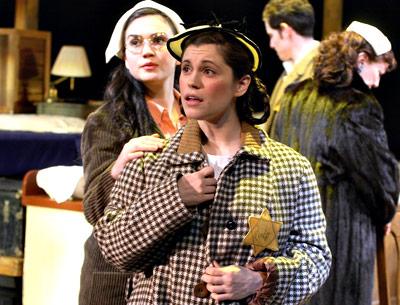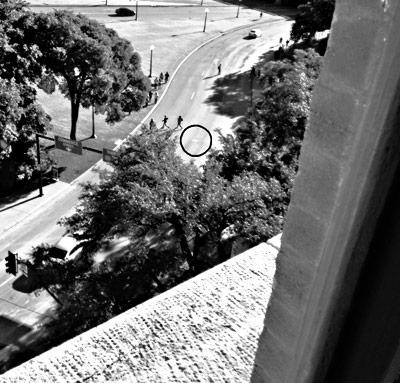Grieving Over the Monarch
Grieving Over the Monarch
As fall sets in and I look back at summer, I must admit I feel a sadness, an angry feeling that something I’ve treasured on the East End has been taken away. The monarchs have all but disappeared.
Now, I can only recount what I used to witness. Every summer toward the middle of July, the monarchs started drifting into our garden. The Asclepias tuberosa and milkweed, or Asclepias syriaca, flowers, timed perfectly with the monarch’s arrival, were beginning to bloom, filling the air with their pungent, sweet fragrance. The varieties of Asclepias and their nectar feed the butterflies while their leaves nourish the monarchs’ larvae or caterpillars.
For more than 20 years, my family and I have rejoiced over the replay of the monarchs’ natural ritual of arrival from long-distance winter habitats in Mexico, their renewal in our garden with larvae, then caterpillars, then pupae, and, finally, young butterflies, and then, with the onset of fall, their departure. This southern journey will take them above the Atlantic coastal waters, down into the Southern United States, where they produce another generation, and eventually back down to Mexico, where again they will arrive, renew, and, come spring, depart for yet another journey to the Northeastern U.S.
This summer this ritual changed markedly. At best, two monarchs graced our garden. The Asclepias came and went with no butterflies sucking their nectar, no caterpillars chewing their leaves, and no glittering monarch pupae decorating leaves anywhere.
On garden walks, this was the focus of our discussion. We talked about the loss; we mourned the butterflies that didn’t show up as they had for so many years. We addressed what we heard was the cause — some pesticide in the South that had killed their natural sources of food, and therefore had interrupted the butterflies’ renewal process to make the final leg of their journey north.
To give expression to my grief, I decided to research what we had rumored in our garden this summer. I found an illuminating interview with Orley Taylor, insect ecologist and founder of Monarch Watch, conducted by Richard Coniff, a contributing editor for the online magazine Yale Environment 360.
“What we’re seeing here in the United States is a very precipitous decline of monarchs that’s coincident with the adoption of Roundup-ready corn and soybeans,” Mr. Taylor said. “The first ones were introduced in 1997, soybeans first, then corn. By 2003, 2004, the adoption rate was approaching 50 percent, and then we really began to see a decline in monarchs. And the reason is that the most productive habitat for monarch butterflies in the Midwest, in the Corn Belt, was the corn and soybean fields [where milkweed, which monarchs feed on, grew]. Before Roundup-ready crops, weed control was accomplished by running a tiller through those fields and chopping up the weeds and turning over the soil, but not affecting the crops. The milkweed survives that sort of tillage to some extent. So there were maybe 20, 30, 40 plants per acre out there, enough so that you could see them, you could photograph them. Now you are really hard pressed to find any corn or soybeans that have milkweed in the fields. I haven’t seen any for years now because of the use of Roundup after they planted these crops. They have effectively eliminated milkweed from almost all the habitat that monarchs used to use.”
I found the next point about ethanol fascinating, frightening, and maddening. As I read it, I asked: As human beings, do we ever look beyond our noses or our wallets at long-term consequences? Do we ever reach out for more information than what’s immediately offered up? Are we truly more intelligent than other creatures on earth? What kind of system have we produced that allows and rewards the destruction of our collective natural heritage?
“Ethanol is a big issue too,” Mr. Taylor continued. “We’ve seen a 25.5 million-acre increase in the amount of corn and soybeans since 2006. And that’s been at the expense of nearly 10 million acres of Conservation Reserve Program land, which farmers are paid to set aside for wildlife. The other 15.5 million acres means that farmers had to plant a lot of marginal land — that would be milkweed habitat, pollinator habitat, rangeland, grassland, and so on. So there has been a tremendous change in agriculture to accommodate the production of biofuel.”
Beyond genetically modified organisms, Roundup, and the loss of milkweed fields, climate change is playing a role in monarchs’ decline. I read that drought and excessive heat last summer also influenced the 80-percent drop in the number of monarchs overwintering in the mountains of Mexico last year. Then, unusually cold spring temperatures delayed the first breeding cycle of the monarchs in the Southern U.S., and that in turn delayed the next generation’s migration northward. This raises the question of whether the monarch has been left with enough time to complete its fourth generation to return to Mexico.
My sadness at the loss of the beautiful monarchs makes me want to do more. I will talk to our politicians; I will get the word out about what’s happening. What I’d encourage my fellow East Enders and everyone on Long Island to do is raise your voices. Let your concerns be heard. Write your Congressional senators and representatives.
Also, we need to find out what our local farmers are doing. Already I’ve heard that a number of East End farmers have switched to GMO corn. We need to get out and talk to them about the long-term impact of this decision and to understand from them why and how they’ve been convinced to switch. Then, when all is said and done, each one of us who gardens needs to plant more Asclepias to grace our gardens, with the hope that monarchs will return and will be rewarded for their long journey with plenty of food on the East End.
Judy Bergsma served for 18 years on the Nature Conservancy’s Long Island board and is now an honorary trustee. She is the founder of MayaBags in southern Belize and lives in New York City and East Hampton.


